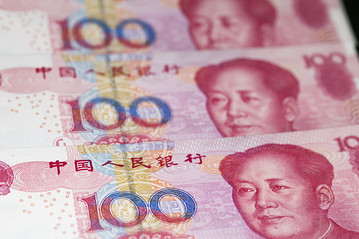China’s Central Bank Engineered Yuan’s Decline
< < Go Back
PBOC Prepares for a Wider Currency Trading Range
China’s central bank engineered the recent decline in the country’s currency to shake out speculators as it prepares to allow a wider trading range for the tightly tethered yuan, according to people familiar with the central bank’s thinking.
In the past week, the People’s Bank of China has been guiding the yuan lower against the dollar. It has done so by setting a weaker benchmark against which the yuan can trade. It has also intervened in the currency market by directing state-owned Chinese banks to buy dollars, according to traders.
The moves brought the yuan, also known as the renminbi, to its weakest level in seven months and represents a reversal of the practice for most of last year when the central bank kept pushing the yuan higher against the dollar, even as the currencies in other emerging countries tumbled. Money has been pouring into China—sometimes, analysts have said, by circumventing currency controls—to take advantage of the seemingly unstoppable rise.
By guiding the yuan weaker, the PBOC intends to thwart short-term speculators betting on a continued rise and to introduce greater two-way volatility into its trading. “The PBOC is testing the market as it prepares to widen the yuan’s trading band,” said one of the people familiar with the bank’s thinking.
While a short-term move, making the yuan behave more like a market-driven currency fits into a broader plan to restructure the economy so that it is less dependent on investment and exports.
Though increasingly important in international trade, the yuan isn’t freely convertible. The central bank sets the value, permitting the yuan to fluctuate within a controlled range against the dollar. Currently, the PBOC allows investors to push the yuan’s value 1% in either direction from that set rate in daily trading.
Many analysts and economists expect the central bank to expand that range this year by allowing the currency to move up or down by 2% daily. The last time the band was widened was in April 2012, when it was increased to 1% from 0.5%.
Surging inflows of capital have been complicating Beijing’s efforts to manage the economy, contributing to soaring property prices and injecting excess cash into the financial system. China’s central bank and commercial banks purchased nearly $45 billion worth of foreign exchange in December, the fifth consecutive month of net purchases. A weaker yuan could also help exporters, whose goods would be cheaper in the U.S. and other foreign markets.
The PBOC decided to tamp down expectations for one-way appreciation in the yuan and curb speculative trading during two-day currency-policy meeting that ended on Feb. 18, the people said.
More From The Wall Street Journal (subscription required):




